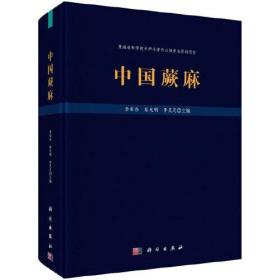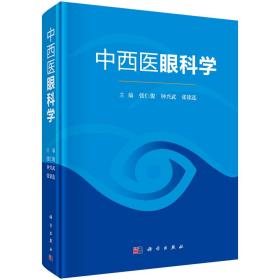
国际结算(适用于双语教学)
正版书籍支持开票
¥ 41.27 6.9折 ¥ 59.8 全新
库存7件
江苏无锡
认证卖家担保交易快速发货售后保障
作者吴国新 主编;王殊 尹肖妮 何一红 洪静
出版社清华大学出版社
出版时间2023-06
版次1
装帧其他
货号文轩7.1
上书时间2024-07-01
- 在售商品 暂无
- 平均发货时间 16小时
- 好评率 暂无
- 店主推荐
- 最新上架
商品详情
- 品相描述:全新
图书标准信息
- 作者 吴国新 主编;王殊 尹肖妮 何一红 洪静
- 出版社 清华大学出版社
- 出版时间 2023-06
- 版次 1
- ISBN 9787302639848
- 定价 59.80元
- 装帧 其他
- 开本 16开
- 纸张 胶版纸
- 【内容简介】
- 《国际结算(适用于双语教学)》是作者根据多年的教学经验,为适应高等院校双语教学需要而编写的教材。本书对当前国际结算中采用的结算方式、结算工具、结算单据等内容做了详细介绍,同时紧密结合近年来国际贸易和国际结算方面国际惯例的新变化与发展,全方位地反映国际结算业务运作的原理、惯例、条件、方式和手段。全书共 9 章,包括总论、国际结算工具、汇款、托收、信用证、其他国际结算方式、国际结算单据、非贸易结算、电子支付。为方便读者使用,书后附录还载有国际商会第 522 号出版物《托收统一规则》、国际商会第600 号出版物《跟单信用证统一惯例》、国际商会《国际备用信用证实务》(ISP98)以及国际商会第 725 号出版物《有关信用证项下银行偿付的统一规则》等。 《国际结算(适用于双语教学)》既可作为高等院校国际经济与贸易学、国际金融等专业本科学生的专业课教材,也可作为业务部门的培训教材,还可作为外贸、银行等领域的参考书。
- 【目录】
-
Chapter 1 General Introduction 1
1.1 Origin and Development of International Settlement 1
1.1.1 Basic Concepts and Content of International Settlement 1
1.1.2 Evolution of International Settlement 6
1.1.3 Characteristics of Modern International Settlement 7
1.2 Basis and Conditions of International Settlement 7
1.2.1 Correspondent Banks in International Settlement 7
1.2.2 Some Organizations Relevant to International Settlement 10
1.3 International Payment Systems 14
1.3.1 Brief Introduction 14
1.3.2 Some Major Payment Systems 16
Exercises 24
Chapter 2 Instruments of International Settlement 25
2.1 An Overview of Negotiable Instrument 25
2.1.1 Definition of Negotiable Instrument 25
2.1.2 Chief Features of Negotiable Instrument 26
2.1.3 Parties to Negotiable Instrument 27
2.2 Bill of Exchange 28
2.2.1 Definition of Bill of Exchange 28
2.2.2 Contents of Bill of Exchange 29
2.2.3 Parties to Bill of Exchange 32
2.2.4 Classification of Bill of Exchange 36
2.2.5 Acts of Bill of Exchange 40
2.2.6 The Roles and Advantages of Bill of Exchange 50
2.3 Promissory Note 51
2.3.1 Definition of Promissory Note 51
2.3.2 Characteristics of Promissory Note 51
2.3.3 Contents of Promissory Note 52
2.3.4 Classification of Promissory Note 52
2.3.5 Liabilities of the Parties 54
2.3.6 Differences between Promissory Note and Bill of Exchange 54
2.4 Check 55
2.4.1 Definition of Check 55
2.4.2 Contents of Check 55
2.4.3 Features of Check 56
2.4.4 Parties to Check 56
2.4.5 Classification of Check 57
2.4.6 Check Clearing 58
2.4.7 A Banker’s Duty to Honor Checks 60
2.4.8 Dishonor of Checks 61
2.4.9 Differences between Check and Bill of Exchange 61
2.5 Cases: A Fraud Case with Forged Draft 62
Exercises 63
Chapter 3 Remittance 65
3.1 Outline of Remittance 65
3.1.1 Definition of Remittance 66
3.1.2 Parties to Remittance 66
3.1.3 Types of Remittance 67
3.1.4 Characteristics of Remittance 68
3.2 Procedures for Remittance 68
3.2.1 Different procedures for Remittance 68
3.2.2 Comparison of the M/T, T/T and D/D 72
3.3 Application of Remittance 72
3.3.1 Practice of Remittance 72
3.3.2 Advantages and Disadvantages of Remittance 74
3.3.3 The Function of Remittance in International Trade 75
3.4 Cases: Case about T/T 78
Exercises 79
Chapter 4 Collection 80
4.1 Overview of Collection 80
4.1.1 Definition of Collection 80
4.1.2 Parties to Collection 82
4.1.3 Types of Collection 84
4.2 Documentary Collection Practice 86
4.2.1 Procedure of Documentary Collection 86
4.2.2 Collection Application Form and Order 89
4.2.3 Uniform Rules for Collection 92
4.3 Risk Protection and Financing under Collection 94
4.3.1 Risks Involved 94
4.3.2 Financing under the Collection 95
4.4 Cases 97
4.4.1 Case 1: A Dispute Triggered by Collecting Bank as the Drawee of
a Draft under a Collection 97
4.4.2 Case 2: A Dispute over the Responsibilities of Collecting Bank under D/P Terms 99
Exercises 101
Chapter 5 Letter of Credit 103
5.1 Overview of L/C 103
5.1.1 Definition of L/C 104
5.1.2 Contents and Form of L/C 104
5.1.3 Characteristics of L/C 110
5.1.4 Parties Involved in L/C 112
5.2 Procedures of L/C 117
5.2.1 Issuance 117
5.2.2 Amendment 119
5.2.3 Utilization and Settlement 121
5.3 Types of L/C (Including Standby L/C) 123
5.3.1 Confirmed Irrevocable Credit 123
5.3.2 According to the Mode of Availability 124
5.3.3 Straight Credit 127
5.3.4 Anticipatory Credit 127
5.3.5 Transferable Credit 128
5.3.6 Back-to-back Credit 130
5.3.7 Revolving Credit 132
5.3.8 Reciprocal Credit 133
5.3.9 Standby L/C 134
5.4 Key Issues under L/C 135
5.4.1 The Role of Banks 135
5.4.2 Common Problems with Documentary Credits 137
5.4.3 Risk Protection 137
5.4.4 Financing under L/C 139
5.4.5 Documentary Credit Application 141
5.4.6 Best Practice When Dealing with an L/C 145
5.4.7 Bank Fees 146
5.4.8 Conclusions 146
5.5 Cases 148
5.5.1 Case 1: A Dispute Incurred by Reimbursement Clause 148
5.5.2 Case 2: A Dispute Arising from Criteria of Document Examination of the Bank 150
5.5.3 Case 3: Banco Santander SA vs. Banque Paribas 152
Exercises 154
Chapter 6 Other Methods of International Settlement 158
6.1 Bank’s Letter of Guarantee 158
6.1.1 Concepts of L/G 158
6.1.2 Parties to L/G 158
6.1.3 Types of L/G 159
6.1.4 Procedure of L/G 161
6.1.5 Contents of L/G 161
6.1.6 Comparison between L/G and L/C 162
6.2 International Factoring 163
6.2.1 Concepts of International Factoring 163
6.2.2 The History and Trends of International Factoring 164
6.2.3 Parties to International Factoring 164
6.2.4 Types of International Factoring 165
6.2.5 Procedure of International Factoring 166
6.2.6 Application of International Factoring 166
6.3 Forfeiting 167
6.3.1 Concepts of Forfeiting 168
6.3.2 The Development of Forfeiting 168
6.3.3 Characteristics of Forfeiting 168
6.3.4 Parties to Forfeiting 169
6.3.5 Procedure of Forfeiting 169
6.3.6 Advantages and Disadvantages of Forfeiting 170
6.4 Cases: A Dispute Incurred by a Shipping Guarantee 171
Exercises 172
Chapter 7 Documents Used in International Settlement 173
7.1 Commercial Documents 173
7.1.1 Commercial Invoice 173
7.1.2 Customs Invoice 175
7.1.3 Packing List 177
7.2 Transport Documents 179
7.2.1 Marine Bills of Lading 179
7.2.2 Airway Bill 183
7.2.3 Railway Bill 185
7.3 Insurance Documents 185
7.3.1 Insurance Policy 185
7.3.2 Insurance Certificate 187
7.4 Certificate of Origin 187
7.5 Documents Examinations and Disposal of Discrepancies 191
7.5.1 Document Checklists 191
7.5.2 Documents Examination 191
7.5.3 Disposal of Discrepancies 193
7.6 Cases 194
Exercises 199
Chapter 8 Non-trade Settlement 205
8.1 Basic Content of Non-trade Settlement 205
8.2 Non-trade Remittance 205
8.2.1 Overseas Chinese Remittance 205
8.2.2 Traveler’s Check 205
8.3 Clean Collection and Clean L/C 208
8.3.1 Clean Collection 208
8.3.2 Clean L/C and Traveler’s L/C 209
8.4 Credit Card 210
8.4.1 Definition of Credit Card 210
8.4.2 Parties to Credit Card 210
8.4.3 Procedure of Credit Card 211
8.4.4 Functions of Credit Card 212
8.4.5 Kinds of Credit Card 213
8.5 Cases 213
Exercises 214
Chapter 9 Cyber Payment 215
9.1 Introduction of Cyber Payment 215
9.1.1 Definition of Cyber Payment 215
9.1.2 Parties Involved in Cyber Payment 216
9.1.3 Types of Electronic Cash Technology 217
9.1.4 Advantages and Disadvantages of Cyber Payment 217
9.2 Payment through the Internet 218
9.2.1 Electronic Cash on the Internet 218
9.2.2 Credit and Charge Cards on the Internet 221
9.2.3 Internet Banking 223
9.2.4 Secure Electronic Transaction Protocol 223
9.2.5 Secure Socket Layer Protocol for Cyber Payment 224
9.2.6 Risks in Cyber Payment 224
9.3 Cyber Payment — Today and Future 224
9.3.1 Cyber Payment-Today 224
9.3.2 Cyber Payment-Future 225
9.4 Cases: All about Mondex 225
Exercises 229
References 230
Appendix 1 Glossary 231
Appendix 2 ICC Uniform Rules for Collections 251
Appendix 3 ICC Uniform and Practice for Documentary Credits 251
Appendix 4 International Standby Practices (ISP98) 251
Appendix 5 ICC Uniform Rules for Bank-to-bank Reimbursements under Documentary
Credits (ICC Publication No.725) 252
点击展开
点击收起
— 没有更多了 —





















以下为对购买帮助不大的评价